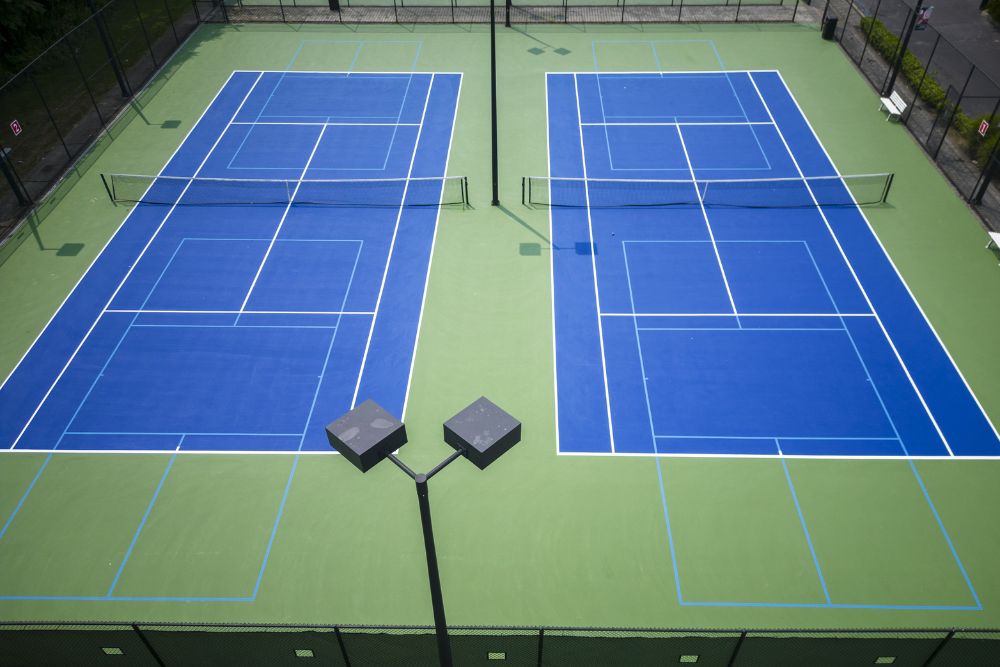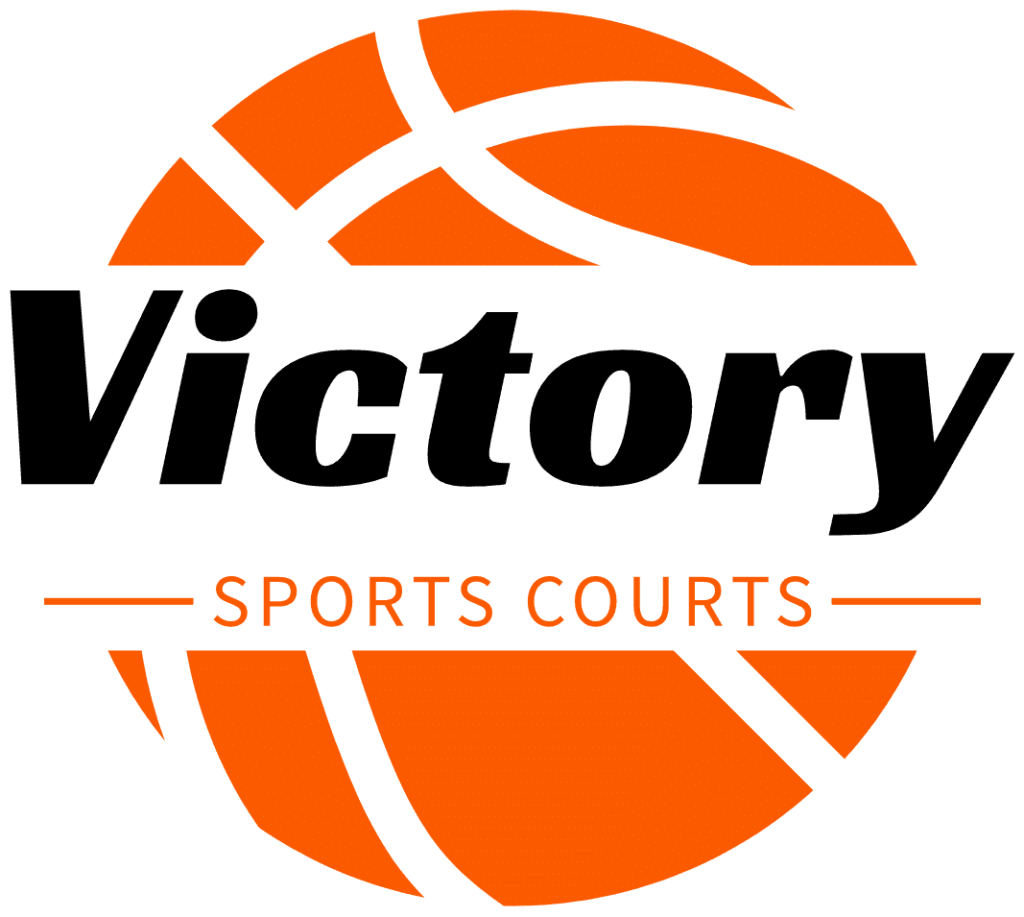Comparing Options for Your Ideal Court
When it comes to installing a pickleball court, selecting the right surface is crucial as it directly impacts game performance, maintenance needs, and court lifespan. Whether you’re a homeowner planning a backyard court or a community aiming to construct a public facility, knowing your surface options is essential for making a well-informed decision. In this comprehensive guide, we’ll delve into different pickleball court surface materials, discussing their respective advantages, disadvantages, and the important factors you should carefully consider before proceeding with installation. This knowledge will empower you to choose the optimal surface that aligns with your specific requirements and enhances your overall pickleball experience.
Factors to Consider Before Choosing a Surface

Before diving into specific surface materials, it’s essential to consider several factors that can influence your decision:
Location and Climate
The geographical location and climate play a significant role in selecting the right surface. Different materials perform differently in various weather conditions, so understanding your local climate—whether it’s hot and dry or cold and wet—will help determine durability and maintenance needs.
Budget
Your budget will dictate the type of surface you can afford. Some materials are more cost-effective but may require more maintenance, while others have a higher upfront cost but offer long-term savings.
Intended Use
How you plan to use the court—recreationally, competitively, or both—will impact your surface choice. Competitive players may prioritize speed and consistency, while recreational players may prefer comfort and safety.
Maintenance Requirements
Consider the maintenance efforts required for each type of surface. Some materials need regular cleaning, resurfacing, or repair, while others are more low-maintenance.
Longevity
The lifespan of the surface material should align with your long-term plans for the court. Factors like UV resistance, wear resistance, and aging characteristics are crucial here.
Common Pickleball Court Surface Options

Several common options exist for pickleball court surfaces, each offering distinct advantages and considerations. Asphalt, a traditional choice, is favored for its durability and affordability, providing a smooth playing surface suitable for various weather conditions. However, it requires regular maintenance to fill cracks and maintain optimal playing conditions. Concrete is another popular option known for its durability and low maintenance requirements. It offers a consistent playing surface with good ball bounce and player traction, although it can be expensive to install initially and may become slippery when wet without proper texturing.
Alternatively, Plexipave, originally designed for tennis courts, offers excellent durability, UV resistance, and a uniform playing surface. While costly and requiring professional installation, it provides long-term performance and aesthetic versatility. Sport court tiles, made from materials like polypropylene, offer shock absorption, traction, and easy customization, though they can be costly to install and require precise leveling for optimal playability. Each option presents unique benefits and considerations, allowing you to choose the best surface based on your budget, maintenance preferences, and desired playing experience.
Enhance Your Game: Pickleball Court Surface Insights
Enhancing your game starts with choosing the right surface for your pickleball court. The surface type significantly influences gameplay, affecting ball bounce, player movement, and overall performance. For instance, asphalt courts are popular for their durability and affordability, providing a smooth playing surface suitable for various climates. However, they require regular maintenance to upkeep their quality. Concrete courts offer similar durability with lower maintenance needs and good traction, though they may become slick when wet without proper treatment.
On the other hand, specialized surfaces like Plexipave offer superior durability and consistent playability, albeit at a higher initial cost and requiring professional installation. Sport court tiles provide excellent shock absorption and customization options but can be expensive and require precise installation for optimal performance. Understanding these surface options and their implications ensures you can make an informed decision that enhances your pickleball experience, optimizing both enjoyment and gameplay quality.
Choosing the Best Surface for Your Needs
To determine the best surface for your pickleball court installation, consider the following steps:
- Evaluate Local Conditions: Assess your local climate and environmental factors that may impact the surface’s performance and longevity.
- Set Your Budget: Determine how much you’re willing to invest upfront and consider long-term maintenance costs.
- Consult with Experts: Speak with contractors or court builders experienced in installing pickleball courts. They can provide valuable insights and recommendations based on local knowledge.
- Consider Player Preferences: If possible, gather input from potential users of the court—whether recreational players or competitive athletes—to understand their priorities.
- Plan for Maintenance: Factor in ongoing maintenance requirements when making your decision. A well-maintained court will last longer and provide a better playing experience.
Decoding Pickleball Court Surfaces: What You Need to Know

Decoding pickleball court surfaces is essential for anyone considering installation or renovation. Each surface type offers unique characteristics that directly impact gameplay, maintenance requirements, and overall longevity. Asphalt, a common choice, provides durability and affordability but needs regular maintenance to prevent cracking and ensure optimal play conditions. Concrete surfaces, known for their solidity and minimal upkeep, offer good ball bounce and player traction, though they may require texturing to prevent slipperiness when wet.
Specialized options like Plexipave are renowned for their durability, UV resistance, and consistent playing surface, making them ideal for competitive play despite higher installation costs. Sport court tiles, made from materials like polypropylene, offer flexibility in design and shock absorption, albeit at a higher initial investment and requiring meticulous installation for seamless play. Understanding these nuances empowers players and facility managers alike to select the best surface that aligns with their specific needs, enhancing the overall pickleball experience and ensuring optimal performance for years to come.
Best Surface Options for Pickleball Courts
When it comes to selecting the best surface for pickleball courts, several options cater to varying preferences and needs. Concrete is a popular choice due to its durability and relatively low maintenance requirements. It provides a smooth playing surface with consistent ball bounce and player traction, making it suitable for both recreational and competitive play. Another excellent option is Plexipave, known for its resilience against UV rays and weather conditions. While it requires professional installation and periodic recoating, Plexipave offers a uniform surface that enhances gameplay quality.
For those seeking versatility and easy maintenance, sport court tiles are an attractive choice. These interlocking modular tiles provide excellent shock absorption, traction, and customization options, though they may require precise installation to ensure a seamless playing experience. Ultimately, the best surface option depends on factors such as budget, climate, intended use, and long-term maintenance considerations, ensuring your pickleball court meets your specific needs and enhances your playing experience.
Conclusion
Choosing the right surface for your pickleball court installation is a decision that impacts more than just gameplay—it influences maintenance efforts, longevity, and overall player satisfaction. Whether opting for the durability of asphalt, the low maintenance of concrete, the performance of Plexipave, or the versatility of sport court tiles, each choice comes with its own set of considerations and benefits. At Victory Sports Courts in Colts Neck, the importance of selecting the perfect surface to enhance the pickleball experience is understood. For expert guidance and quality installation services, contact Victory Sports Courts today at 732-757-5705. Ensure your pickleball court not only meets but exceeds expectations for years to come.

